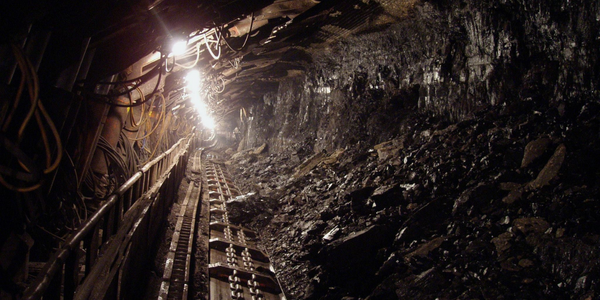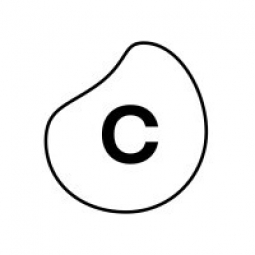Technology Category
- Analytics & Modeling - Process Analytics
- Functional Applications - Manufacturing Execution Systems (MES)
Applicable Industries
- Mining
- Pharmaceuticals
Applicable Functions
- Procurement
- Quality Assurance
Use Cases
- Additive Manufacturing
- Time Sensitive Networking
Services
- Testing & Certification
About The Customer
Vetter is a leading contract manufacturer in the pharmaceutical industry, founded in Germany in the 1950s. The company has always been guided by the principle of innovation, which has led to impressive growth and multiple awards. Vetter is an international specialist in the fill and finish manufacturing of aseptically prefilled syringe systems, cartridges, and vials. The company has a strong commitment to process excellence and has a dedicated department for this purpose. Vetter's goal is to identify and eliminate waste in the company's most relevant processes, and it recognizes the huge potential of process optimization.
The Challenge
Vetter, a leading contract manufacturer in the pharmaceutical industry, was facing high expectations in terms of product quality, availability, and compliance with strict health regulations. The company recognized the potential of process optimization and had its own Process Excellence department. However, they struggled with in-depth analysis of their digital processes and often based decisions on gut feelings. They also wanted to understand how different processes interacted with each other. Furthermore, Vetter needed to improve its change control and deviation management processes, which used Trackwise® as their main underlying software. The company needed key performance indicators (KPIs) that would allow for the optimization of its Trackwise® processes without compromising them. The challenge was to make Accounts Payable (AP), Accounts Receivable (AR), Order-to-Cash (O2C), Purchase-to-Pay (P2P) and its two Trackwise® processes fully transparent.
The Solution
Vetter turned to Celonis, the market leader in process mining technology, to help optimize its processes. The company first learned about Celonis through a proof of value (POV) within their strategic initiative, Vetter Excellence 2025. Celonis was used to improve change control and deviation management processes, which employ Trackwise® as their main underlying software. To implement the two Trackwise® processes, Vetter decided to get INFOMOTION, a full-service provider for data solutions, on board. The main challenge was to harmonize the three process levels Trackwise® uses to analyze and visualize processes: main process, sub-process and sub-sub-process. Celonis developed a special analysis approach for the two processes. The initial project phase consisted of seven steps, starting with a kick-off meeting and ending with a consolidation workshop before a process enters the continuous optimization phase.
Operational Impact
Quantitative Benefit

Case Study missing?
Start adding your own!
Register with your work email and create a new case study profile for your business.
Related Case Studies.

Case Study
Case Study: Pfizer
Pfizer’s high-performance computing software and systems for worldwide research and development support large-scale data analysis, research projects, clinical analytics, and modeling. Pfizer’s computing services are used across the spectrum of research and development efforts, from the deep biological understanding of disease to the design of safe, efficacious therapeutic agents.

Case Study
Fusion Middleware Integration on Cloud for Pharma Major
Customer wanted a real-time, seamless, cloud based integration between the existing on premise and cloud based application using SOA technology on Oracle Fusion Middleware Platform, a Contingent Worker Solution to collect, track, manage and report information for on-boarding, maintenance and off-boarding of contingent workers using a streamlined and Integrated business process, and streamlining of integration to the back-end systems and multiple SaaS applications.

Case Study
Underground Mining Safety
The goal was to produce a safety system to monitor and support underground mining operations; existing systems were either too simple (i.e. phone line) or overly complex and expensive, inhibiting deployment, and providing little-to-no support in event of an accident. Given the dangerous nature of the mining work environment and the strict regulations placed on the industry, the solution would have to comply with Mine Safety and Health Administration (MSHA) regulations. Yet the product needed to allow for simple deployment to truly be a groundbreaking solution - increasing miner safety and changing daily operations for the better.

Case Study
Process Control System Support
In many automated production facilities, changes are made to SIMATIC PCS 7 projects on a daily basis, with individual processes often optimised by multiple workers due to shift changes. Documentation is key here, as this keeps workers informed about why a change was made. Furthermore, SIMATIC PCS 7 installations are generally used in locations where documentation is required for audits and certification. The ability to track changes between two software projects is not only an invaluable aid during shift changes, but also when searching for errors or optimising a PCS 7 installation. Every change made to the system is labour-intensive and time-consuming. Moreover, there is also the risk that errors may occur. If a change is saved in the project, then the old version is lost unless a backup copy was created in advance. If no backup was created, it will no longer be possible to return to the previous state if and when programming errors occur. Each backup denotes a version used by the SIMATIC PCS 7 system to operate an installation. To correctly interpret a version, information is required on WHO changed WHAT, WHERE, WHEN and WHY: - Who created the version/who is responsible for the version? - Who released the version? - What was changed in the version i.e. in which block or module of the SIMATIC PCS 7 installation were the changes made? - When was the version created? Is this the latest version or is there a more recent version? - Why were the changes made to the version? If they are part of a regular maintenance cycle, then is the aim to fix an error or to improve production processes? - Is this particular version also the version currently being used in production? The fact that SIMATIC PCS 7 projects use extremely large quantities of data complicates the situation even further, and it can take a long time to load and save information as a result. Without a sustainable strategy for operating a SIMATIC PCS 7 installation, searching for the right software version can become extremely time-consuming and the installation may run inefficiently as a result.

Case Study
Mining Firm Quadruples Production, with Internet of Everything
Dundee Precious Metal’s flagship mine, in Chelopech, Bulgaria, produces a gold, copper, and silver concentrate set a goal to increase production by 30%. Dundee wanted to increase production quality and output without increasing headcount and resources, improve miner safety, and minimize cost.








